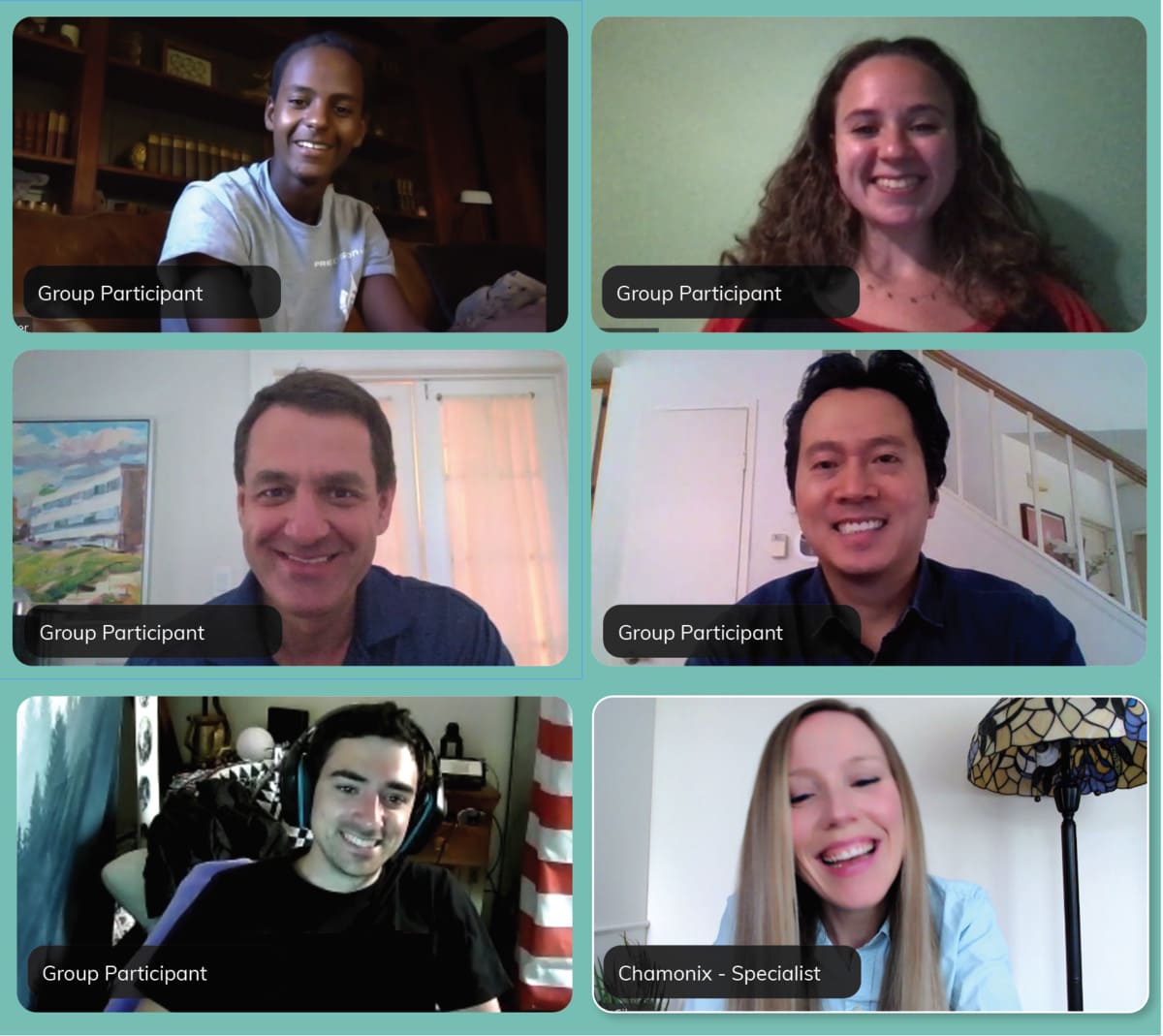Group Therapy
How does group stuttering therapy work?
Are you looking to meet others who stutter, to feel a sense of belonging, and to work on your individual goals as you do therapy together? Weekly group therapy may be just your fit and it’s a lot of fun! Meet me on Zoom or in person for a consultation and let’s find out! Group therapy has six to eight clients that meet at the same time each week and it is very different from a support group.
- Mock interviews, role playing, presenting, and joke telling.
- Use of the Hope for Stuttering workbook.
- Various paired practices in break out rooms.
- Avoidance reduction and exposure therapy focus.
- Social skills including starting and maintaining conversations.
- Meditation, HeartMath techniques, & nervous system regulation tools.
- Accountability with checking in on daily assignments/goals.
- Trauma informed therapy.
- More that is customized for each group session meeting.

Get Started with a 75-Min Virtual Consultation
Benefits of Group Therapy
- Opportunity for transfer and carry-over of skills to new partners.
- Increased resiliency through connection, belonging, and community.
- Social skill development.
- Inspiration and learning from group members.
- More affordable than individual therapy.
- It’s fun to be with a group and feels like family!
WHAT CLIENTS SAY:
I have gained a lot of confidence working with you.
RAY | GROUP THERAPY CLIENT
Frequently Asked Questions
Everyone is different. I’ve had clients get what they need in a few months and some need a few years. You can accelerate growth by attending a retreat, if it’s appropriate for you. You can accelerate your progress by following through and independently putting into action what you are learning in sessions. What you do outside of sessions matters. Weekly group therapy sessions and individual therapy sessions are ongoing with progress check ins.
It is the word commonly used in Great Britain for stuttering. In the United States I find people often use the word stammering to describe a more mild form of stuttering.
Stuttering that occurs in someone who has never stuttered in the past, after a neurological trauma or disease. It can begin after a stroke, traumatic brain injury, with neurodegenerative disorders such as Parkinson’s disease or multiple sclerosis, brain tumors, and even drug use. It is also possible for someone who had developmental stuttering as a child (which mostly or completely resolved) to begin stuttering again after neurological trauma. Developmental stuttering is the most common form of stuttering which begins in childhood. Neurogenic stuttering typically has an adult onset.
Stuttering which occurs in an adult who has never stuttered in the past, yet there are no medical factors present. The initiation of this stuttering may be linked to emotional stress or trauma that the individual has recently experienced. For example someone who went to war and saw his friends die in front of him or a person who was almost run over by a bus yet had no injury to their head. This form of stuttering is rare.
Everyone experiences normal disfluencies such as repeating a word or using fillers or even having a hard time with language formulation under pressure or when unprepared. This is not the same as stuttering, where the feeling of loss of control, accompanying anticipation and avoidance behaviors are involved. These true stuttering moments fluctuate and are not only during the above mentioned situations. Telling someone who stutters that ‘everyone stutters sometimes’ or that ‘you do also’ usually comes from a kind place and good intentions, but it is inaccurate and also invalidating of the person who stutters experience.
Avoidance Reduction Therapy is based on the work of Joseph and Vivian Sheehan and has been expanded upon, taught, and promoted by clinician Vivian Sisskin. This approach to therapy focuses on becoming aware of and reducing avoidance behaviors, struggle, and fear. It includes stuttering openly. It involves components of identification and desensitization. It does not include working on controlling speech or any physical speech strategies.
